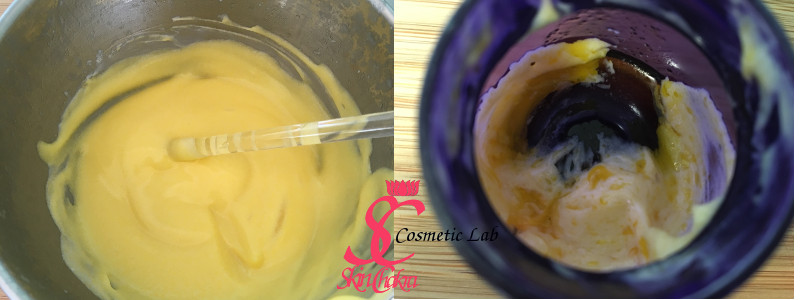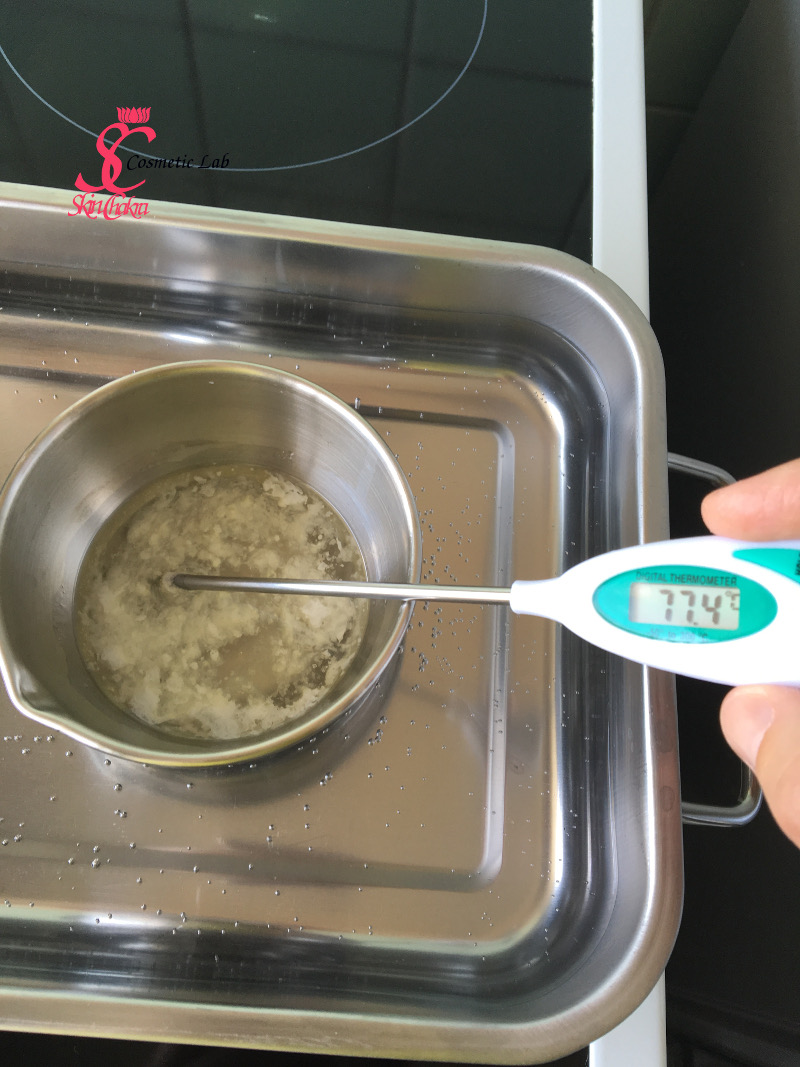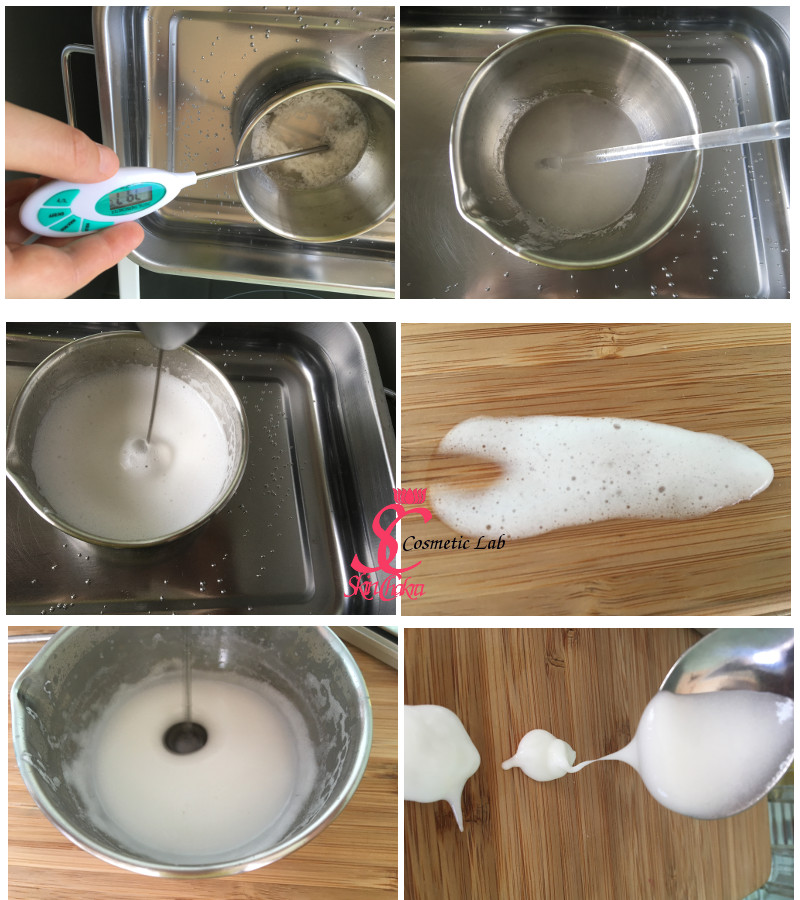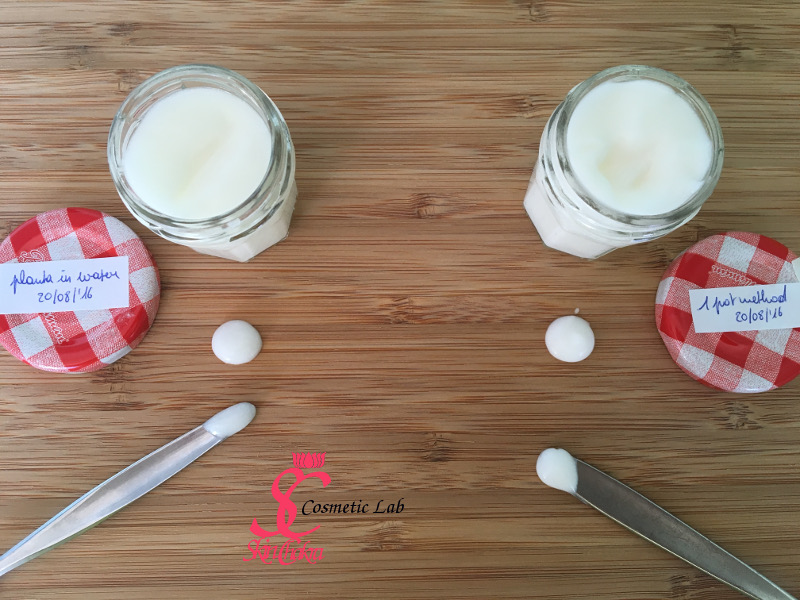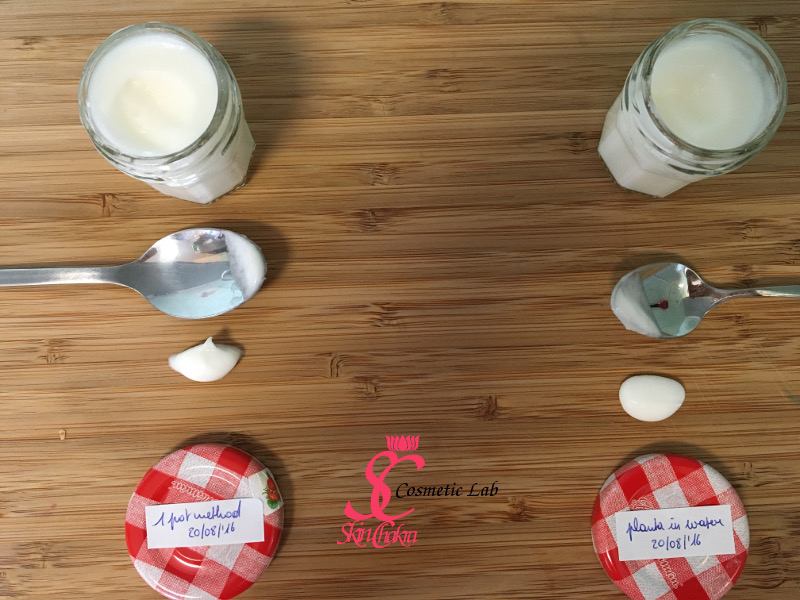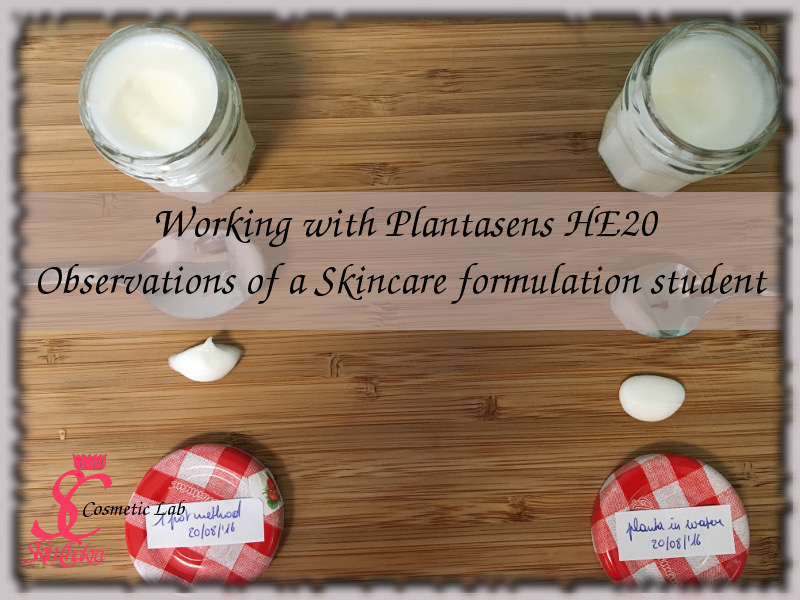
Freitag, 14. Oktober 2016
How to work with Plantasens HE20: a cosmetic formulation student's diary
@SkinChakra we don't sell any ingredient we have not worked with and are not sure about its being an outstanding ingredient.
Plantasens HE20 is one of those ingredients that we've been working with for almost one year and we've used it in many custom dormulations we've prepared for other customers.
I personally fell in love with this emulsifier because it was quite easy to handle and because you can process it in a hot-cold process which I find extremely helpful in natural formulations when you work with heat sensitive ingredients. It creates nice and smooth emulsions with little soapiness.
I've shared many recipes and tutorials with this emulsifier and we've sold it to different customers from artisan manufacturers to skincare formulation students to DIY-ers all around the world from New Zealand and Mongolia to Canada and USA.
Apart from my own experience with this emulsifier (and other ingredients we retail @SkinChakra), I always like to have some guest tutorials and reports from customers who use our ingredients. Teresa from the balm kitchen for example has shared many guest tutorials on our blog. Carol from New Zealand is a customer who generously shares her recipes and photos on our facebook wall. All of you might have slightly different procedures, equipment, ambient temperature and humidity in your region and a different point of view and sharing it with our readers and customers is a huge asset for all of our customers. Your experience helps your peers to know what to do and what not to do when working with a certain ingredient and we really appreciate the time you invest to send us your product reviews, share your photos and recipes.
Plantasens HE20 is the emulsifier I've used for many emulsions in the upcoming hair care course with Formula Botanica and I think it is worth trying to work with this emulsifier specially if you're planning to enroll in this course.
Jilly from Belgium who is a brilliant skincare formulation student has tried Plantasens HE20 in several formulations and has gathered a diary of her successful and failed trials in a detailed report (some 40 pages and 40 photos) which is as detailed and precious as a MSc thesis. She was so generous to send us her detailed procedure and results and I'm going to share a compact summary of all her procedure with you. If anyone of you is interested in the whole report, just send us a line and I can send you the full report but here I'm just compacting her results in a short post.
I have to mention that Jilly is extremely disciplined and organized. This is the assmebly of her small lab/kitchen and the utensils she usually uses.
What I personally love about Jilly, apart from her well organized procedure is her persistence in not giving up and her analysis of the results and the possible causes of a failure.
Let's look at her experiments and results in a FFW manner.
In her first trial, and despite our repeated recommendation on starting with KISS principle (Keep It Silly Simple), she has added some precious ingredients to the formulation, just to make it more painful when the procedure failed.
In this procedure she has added Plantasens HE20 to the oil phase and has heated both the oil and the water phase and added the oil phase slowly to the water phase. Since there was no emulsification by stirring with a spatula or whisk, she applied the milk frotter and came to an almost nice emulsion. The emulsion separated however after 10 days.
After the frustration of the first trial and wasting her precious oils and hydrosols, Jilly came back to my advice and screwed down to a very essential and simple formulation:
A/B phase
69% distilled water
5% Plantasens HE20
20% olive pomace oil
(C) gum phase
4% natural glycerine 99,5%
0,5% Solagum AX
(D) cool down phase
0,5% tocopherol
1% Euxyl K903
The differences are in procedures. In te first trial, she has blended the emulsifier into the oil phase and has heated both water and oil phase.
In the second trial, she has blended the emulsifier into the water phase and has only heated the water phase, adding the oil phase @RT.
In the third trial, she has blended both water and oil ohase from the beginning and heated them all together.
Look at her results.
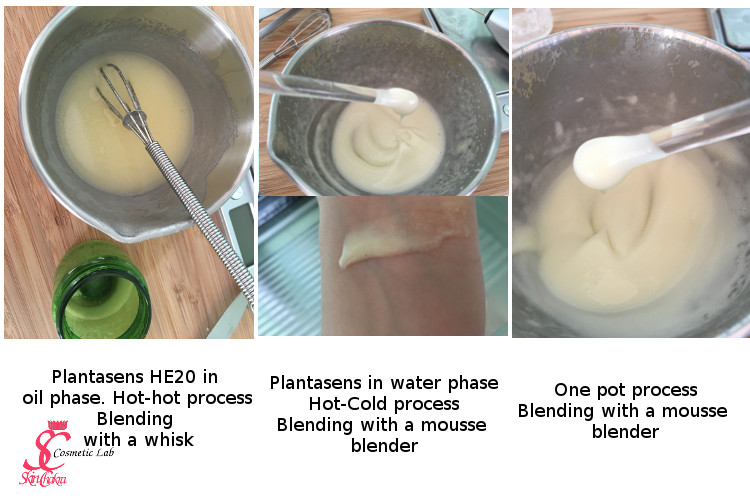 Whereas the first trial (Emulsens HE20 in the oil phase) was a total disaster, the other blending methods (Emulsens HE20 in the water phase and the one-pot method) were much more satisfactory with the one pot method being the best of all the three.
Whereas the first trial (Emulsens HE20 in the oil phase) was a total disaster, the other blending methods (Emulsens HE20 in the water phase and the one-pot method) were much more satisfactory with the one pot method being the best of all the three.
However, Jilly is not quite satisfied with these emulsions (although they seems to be stable @RT for more than a few weeks). They both have some graininess (look at the middle photo with the emulsion on her inner arm).
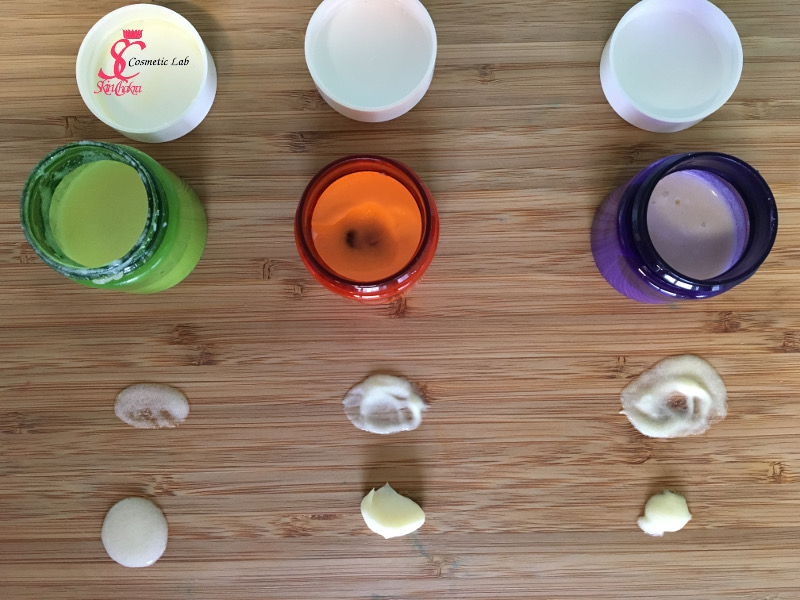 Here we have the three emulsions once more. Exactly the same recipe, from left to right:
Here we have the three emulsions once more. Exactly the same recipe, from left to right:
Emulsifier in the oil phase, one-pot method , emulsifier in the water phase.
Not quite satisfied with the results, Jilly made another one pot attempt and documented each step with a photo. The formulation is quite simple :
(A) one pot phase
5% Plantasens HE20
20% olive pomace oil
69% distilled water
(B) gum phase
4% natural glycerine
0,5% Solagum AX
(C) cool down phase
0,5% tocopherol
1% Euxyl K903
Oil and water phase after heating (but no stirring) in a water phase after 7 minutes
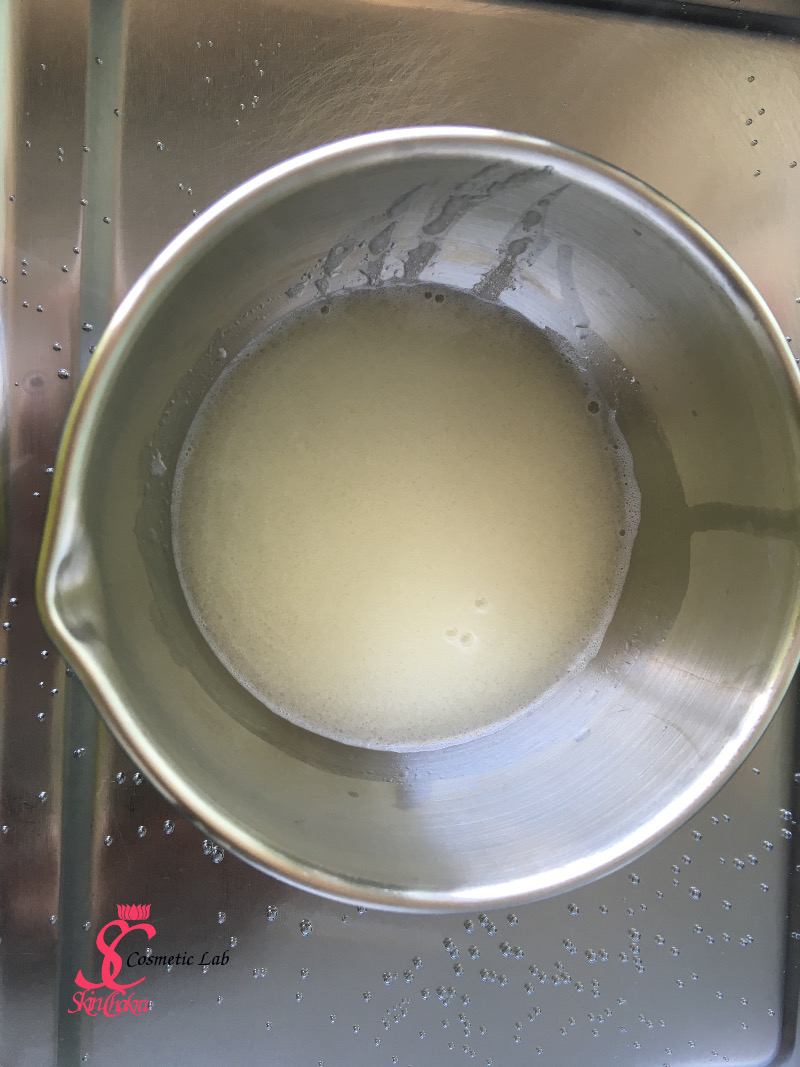 Pre-emulsion after blending with a glass rod
Pre-emulsion after blending with a glass rod
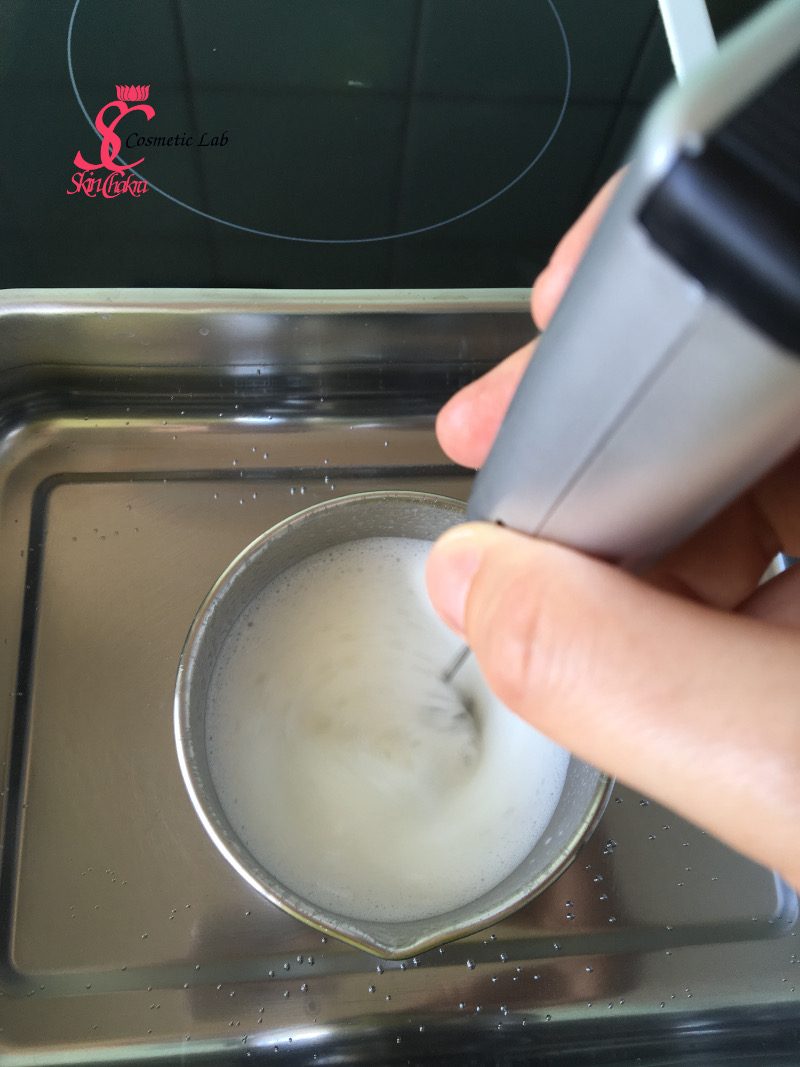 The same emulsion-blending with a mousse blender
The same emulsion-blending with a mousse blender
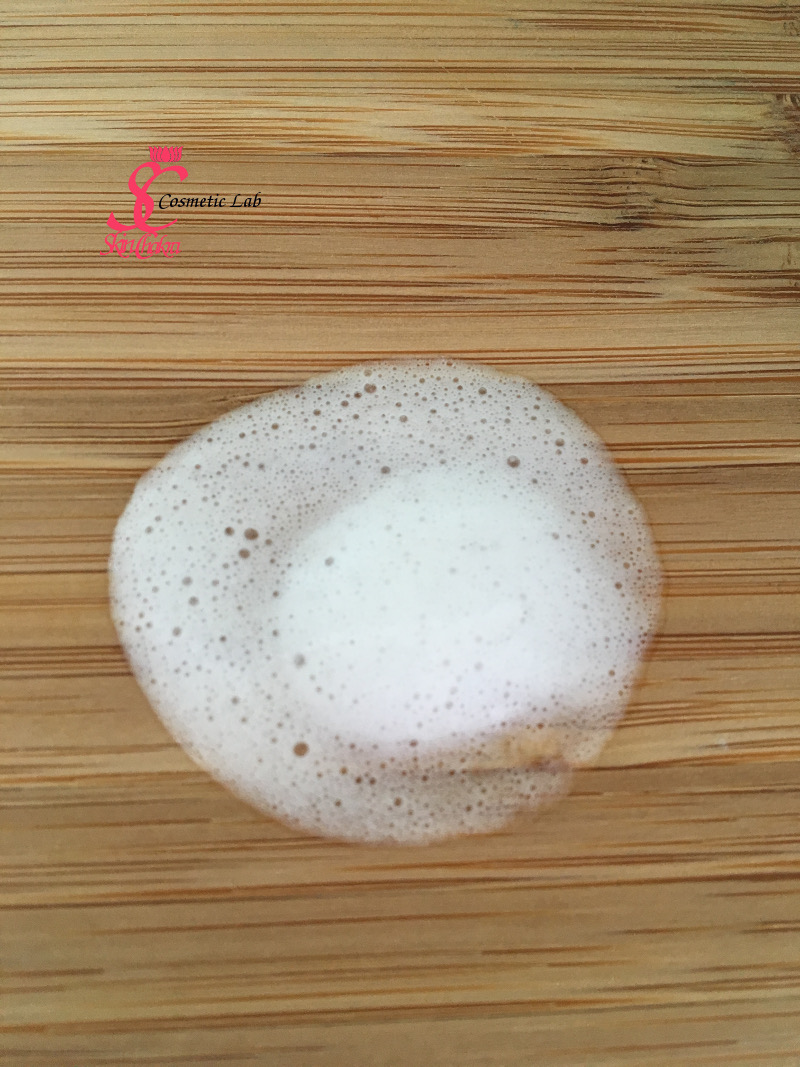 The texture of the emulsion. Looks satisfying
The texture of the emulsion. Looks satisfying
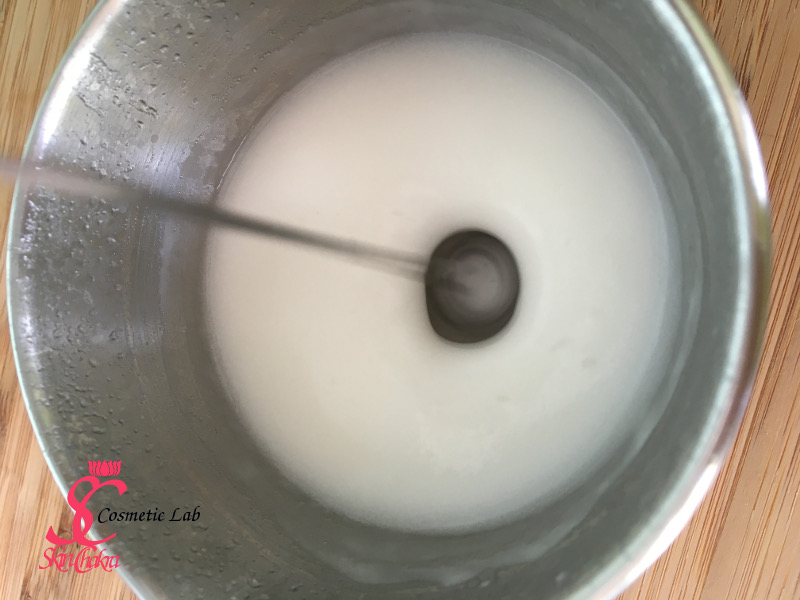 Adding the gum as the emulsion is still warm
Adding the gum as the emulsion is still warm
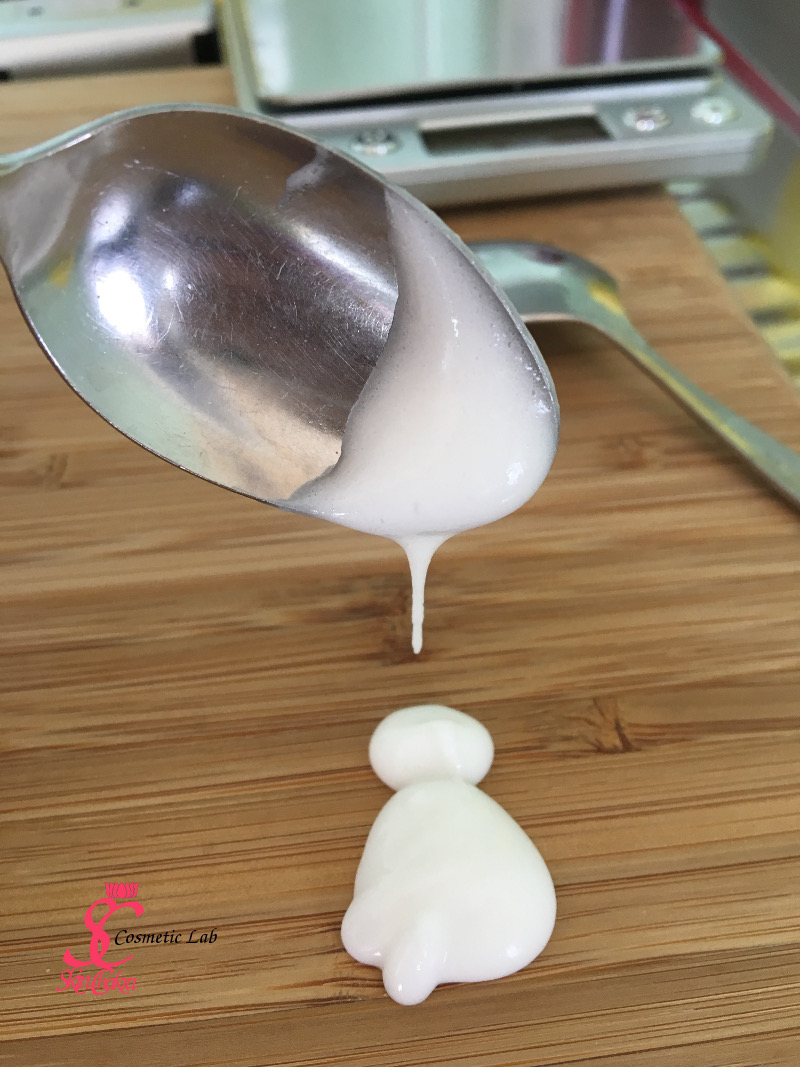 Final texture of the emulsion after cool down. Isn't that lovely?
Final texture of the emulsion after cool down. Isn't that lovely?
Another trial, the same recipe just with Plantasens HE20 added to the water phase.
Can anybody complain our Jilly is not persistent and hard working?
(A) water phase:
5% Plantasens HE20
69% distilled water
(B) oil phase
20% olive pomace oil
(C) gum phase
4% natural glycerine
0,5% solagum AX
(D) cool down phase
0,5% tocopherol
1% Euxyl K903
Procedure:
-
put phase A the water bath
-
don't wait till all plantasens is melted, start blending after 5-10 minutes.
-
7 minutes @75-81°C, sitting in the warm water bath, just leave it be and don’t touch it!

-
when these 7 excruciating minutes have passed, I started stirring with my glass rod but nothing happened …
-
I grabbed my mousse blender and … magic! I did this for about 1 minute until I felt no graininess (small drops on my wrist)
-
out of the warm water bath, keep on stirring with the mousse blender until it is cooler, then slowly add the oil phase whilst stirring
-
stir with the mousse blender for about 5 minutes
-
disperse gum glycerine and add it to the pre emulsion (glass spatula), you can feel an immediate change in the texture while you stir!
-
add tocopherol and preservative
-
pH check + adjust when necessary (pH should be between 5 and 5,5)
And here a comparison of both emulsion (one pot vs Plantasens HE20 in the water phase) immediately after preparation and aon day 11.
Day 1
we'll continue this research study in a second post. So far and from Jilly's experience, you'll need at least a mousse foamer to create a nice and smooth emulsion with Plantasens HE20.
Both methods, adding plantasens to the water phase or doing a one pot method work and create nice and stable emulsions.
From my opinion (Elham) , when you're just starting with Plantasens and working with very small quantities (up to 50 gr), it is good to try a one-pot method. When you've learned the heck out of it and start working with higher quantities and high performance extracts and plant oils, then a hot-cold process when you only heat up a part of the water phase is a better practice.
I hope you've enjoyed this post as much as I did when reading Jilly's report. Proceed to part II .
Don't hesitate to send us your comments and questions per mail , by sending a message to our telegram channel or posting on our facebook wall.
Be Happy and have fun
Disclaimer: SkinChakra is responsible for the content of this blog post. Please send your comments and questions directly to SkinChakra and don't try to contact Jilly in private or via any other online forum/platform. Jilly or one of our team will happily come back to you.

